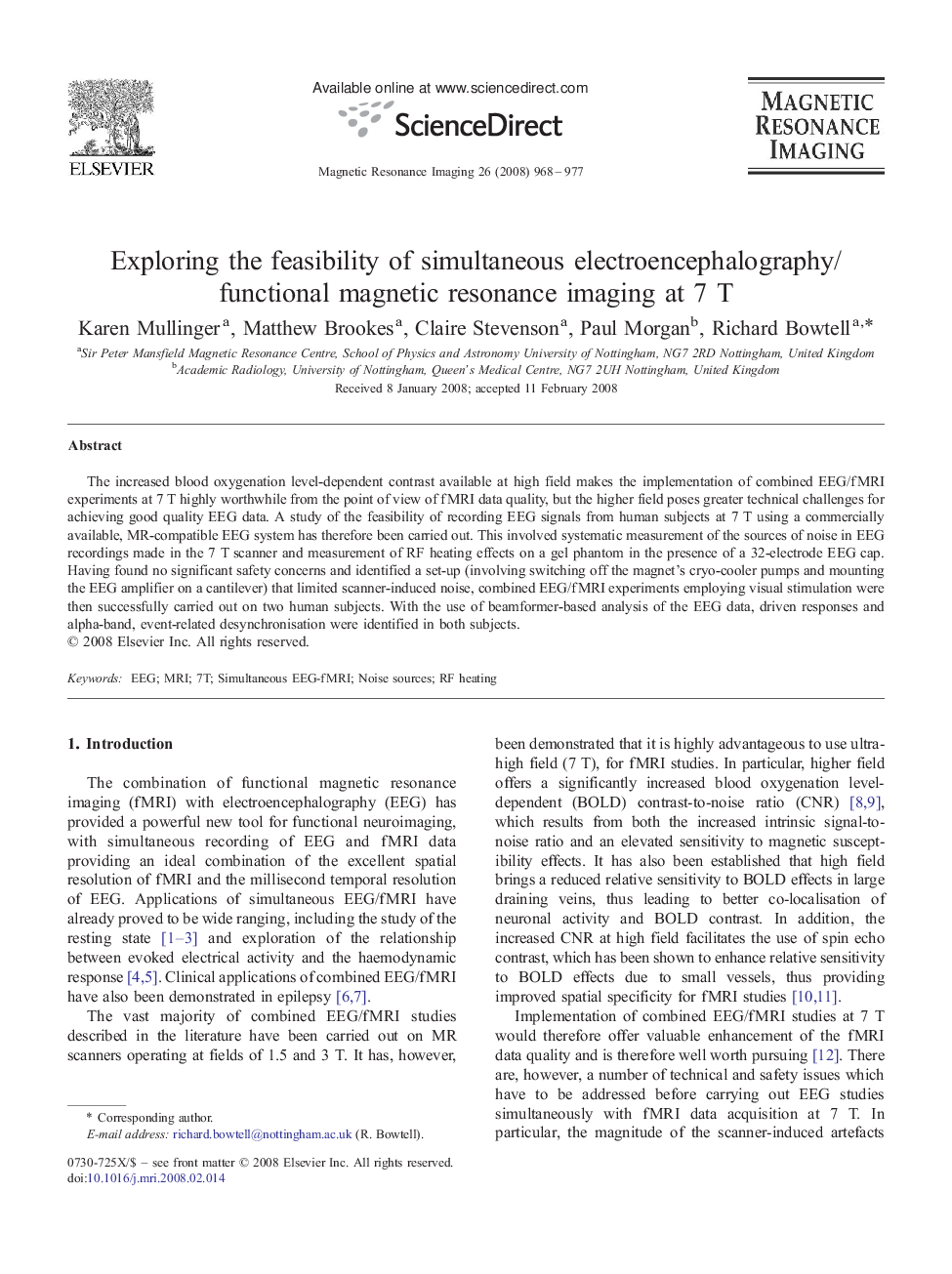| Article ID | Journal | Published Year | Pages | File Type |
|---|---|---|---|---|
| 1807579 | Magnetic Resonance Imaging | 2008 | 10 Pages |
The increased blood oxygenation level-dependent contrast available at high field makes the implementation of combined EEG/fMRI experiments at 7 T highly worthwhile from the point of view of fMRI data quality, but the higher field poses greater technical challenges for achieving good quality EEG data. A study of the feasibility of recording EEG signals from human subjects at 7 T using a commercially available, MR-compatible EEG system has therefore been carried out. This involved systematic measurement of the sources of noise in EEG recordings made in the 7 T scanner and measurement of RF heating effects on a gel phantom in the presence of a 32-electrode EEG cap. Having found no significant safety concerns and identified a set-up (involving switching off the magnet's cryo-cooler pumps and mounting the EEG amplifier on a cantilever) that limited scanner-induced noise, combined EEG/fMRI experiments employing visual stimulation were then successfully carried out on two human subjects. With the use of beamformer-based analysis of the EEG data, driven responses and alpha-band, event-related desynchronisation were identified in both subjects.
